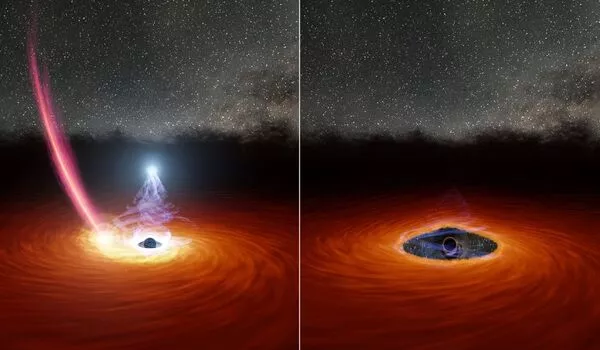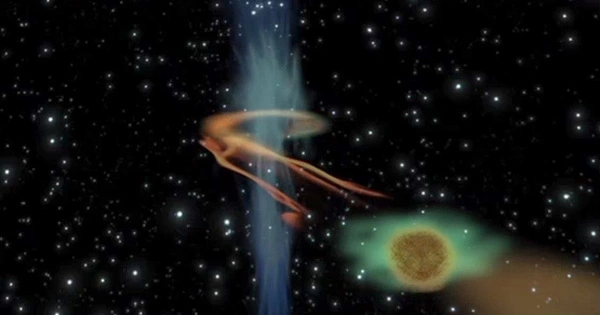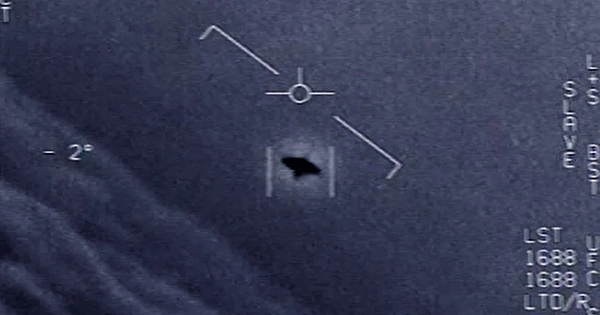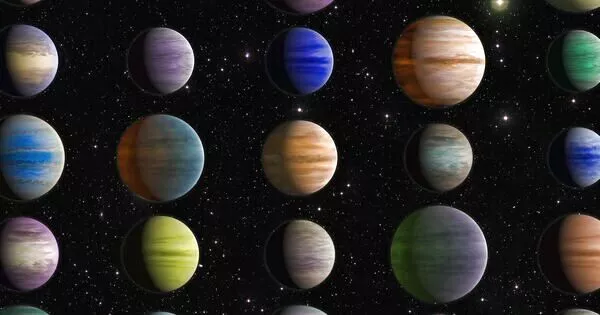The expression “black holes are messy eaters” describes some of the chaotic and energetic processes that occur when a black hole accretes, or consumes, nearby matter. When a black hole actively absorbs material from its surroundings, it creates an accretion disk, which is a swirling mass of gas, dust, and other debris that spirals into the black hole due to its strong gravitational pull.
New observations of the gas flows around a supermassive black hole down to the light-year scale have successfully detected dense gas inflows and shown that only a small portion (about 3 percent) of the gas flowing towards the black hole is eaten by the black hole. The rest is ejected and returned to the host galaxy.
Not all matter that falls into a black hole is absorbed; some is ejected as outflows. However, measuring the ratio of matter “eaten” by the black hole to the amount “dropped” has proven difficult.
New observations of the gas flows around a supermassive black hole down to the light-year scale have successfully detected dense gas inflows and shown that only a small portion (about 3 percent) of the gas flowing towards the black hole is eaten by the black hole. The rest is ejected and returned to the host galaxy.
The Atacama Large Millimeter/submillimeter Array (ALMA) was used by an international research team led by Takuma Izumi, an assistant professor at Japan’s National Astronomical Observatory, to observe the supermassive black hole in the Circinus Galaxy, which is located 14 million light-years away in the direction of the constellation Circinus. This black hole has been observed actively feeding.
As matter falls into the black hole’s gravitational well and spirals inwards, it heats up and emits intense radiation, including X-rays. This high-energy radiation is one of the ways astronomers detect and study black holes.

Some of the infalling material doesn’t directly fall into the black hole. Instead, powerful magnetic fields can launch jets of particles and radiation perpendicular to the accretion disk, creating powerful outflows. These jets can extend over vast distances and carry away a significant amount of energy.
Because of ALMA’s high resolution, the team was the first in the world to measure the amount of inflow and outflow around the black hole on a scale of a few light-years. The team was able to determine the overall efficiency of black hole feeding by measuring the flows of gasses in different states (molecular, atomic, and plasma) and discovered that it was only about 3%.
The team also confirmed that the inflow is being driven by gravitational instability. The analysis also revealed that the majority of the expelled outflows are too slow to escape the galaxy and are lost. They are recycled back into the circumnuclear regions surrounding the black hole and begin to fall towards it again.
















